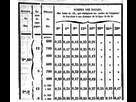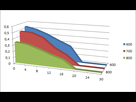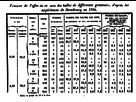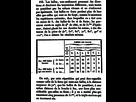A group of ACW re-enactors have been testing the spread of heavy canister using a Napoleon 12pdr cannon, which is about the closest thing available to a French 12 pdr Field Gun.
We fired 17 rounds of Canister from an original Civil War Napoleon Field Cannon for a study on battlefield archeology. Each Canister shell contained 27 steel balls 1.5" in dia that were painted a certain color and then fired out onto a field from various cannon positions. The cannon's coordinates and the balls that were found were all documented using GPS Technology. The cannon was fired at various barrel elevations and at different levels of terrain. The data when analyzed will hopefully help archeologists determine where the cannons may have been placed during a historic battle.
I asked for a link to the result they recorded, but as predicted it looks as though the balls carry much farther than one would expect based on normal wargame standards, so it is reasonale to assume that it's use as a short range weapon was more to do with ammo conservation than effect.
Whatever, the outcome this was a far more useful test than the one conducted by the British Army for the Waterloo documentary which actually produced no usable data.







 Reply With Quote
Reply With Quote












